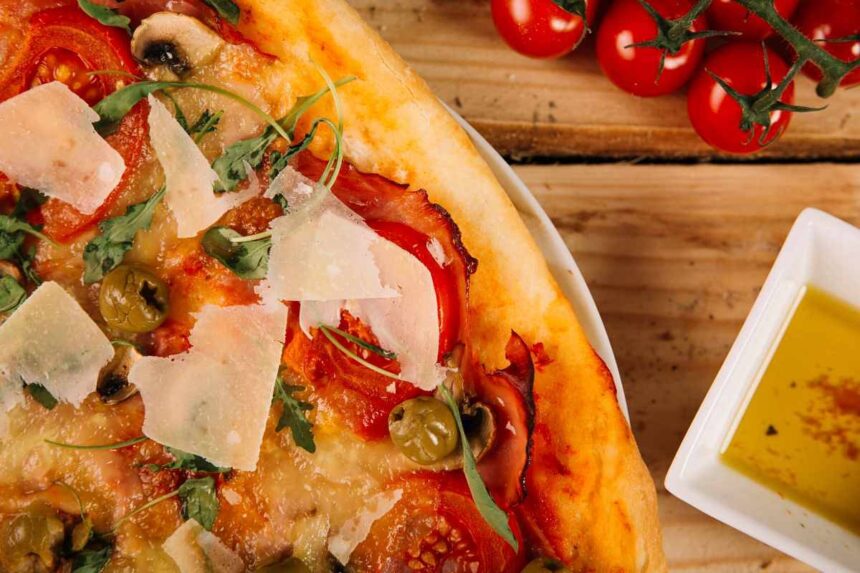An oval dough stretching between the hands, the surface turning golden in the oven, the aroma filling the room. Those who taste pinsa for the first time are surprised: it recalls pizza, but at the first bite it reveals a clear identity, lighter and airier.
A question naturally arises: what is pinsa and why has it become so loved in just a few years? The answer is not in a simple recipe, but in a gastronomic vision that has transformed a dish of Roman tradition into a modern phenomenon.
The soul is in the dough
The base of pinsa follows a different path than classic pizza. Not just one flour, but a carefully balanced mix of wheat, rice, and soy. This blend, worked with plenty of water and dried sourdough starter, creates an elastic and fragrant dough, destined to ferment slowly. Twenty-four, forty-eight, even seventy-two hours of resting time: time becomes an invisible but essential ingredient.
The result is a pinsa that breaks easily and leaves the palate with a sense of lightness. The Latin tradition inspired its name – from the verb pinsere, meaning “to stretch, to flatten” – and the manual gesture of stretching the dough remains an integral part of the ritual.
Pinsa and pizza: two parallel paths
The comparison with pizza is inevitable, but also limiting. Pizza was born from centuries of Neapolitan history, while pinsa comes from a recent intuition that reimagined the way flours and yeast are worked. The most evident difference can already be felt to the touch: pinsa has a lighter structure, with internal air pockets reminiscent of a compact cloud, while the surface delivers a distinct crispness.
This is why pinsa is much more digestible: not a minor detail, considering that we live in times when many seek a balance between pleasure and well-being. Yet reducing it to a “healthy dish” would be unfair: pinsa seduces above all because it is delicious, because each bite holds a balance that is hard to replicate.
An idea born in 2001
Behind the pinsa we know today there is a specific name: Corrado Di Marco. In 2001, this Roman entrepreneur decided to revisit a concept from popular cuisine and give it new life with the help of food science. His goal was not to invent from scratch, but to recover a historical intuition and transform it into a more contemporary food, able to dialogue with modern needs.
Since then, pinsa has left Roman kitchens and reached first Italian restaurants, then international ones. It has entered menus as a gourmet option, a lighter alternative, but also as a product with its own identity. Today, those who work with the original dough speak of continuous refinement, with flours evolving alongside new research, keeping the dynamic nature of pinsa alive.
One of the aspects that makes pinsa so appreciated is its versatility. The light dough and crisp surface naturally welcome any topping: from vegetables to fresh cheeses, from cured meats to more creative or even gourmet ingredients. Some prefer it simple, with just extra virgin olive oil and coarse salt, while others love it richly topped, for pure indulgence.
This flexibility has also made it suitable for different dietary choices. Since the dough contains no dairy, it easily adapts to vegan and vegetarian proposals without losing character. And it is not uncommon to find it served as a base for sweet interpretations, proof of a personality that refuses to be confined to a single definition.
A growing phenomenon
If at the beginning pinsa may have seemed like a local curiosity, today it has become an international gastronomic phenomenon. In many European cities and even overseas, there are venues dedicated exclusively to this flatbread, often opened by Italians who wanted to export a piece of Roman culture.
Its success is not only due to novelty, but to its ability to meet a collective desire: eating with pleasure without feeling heavy. Today, after all, people pay more attention to what they eat, and this is part of the reason why pinsa has found its natural place. It is not perceived as a health compromise, but as a quality choice that unites taste and lightness.
